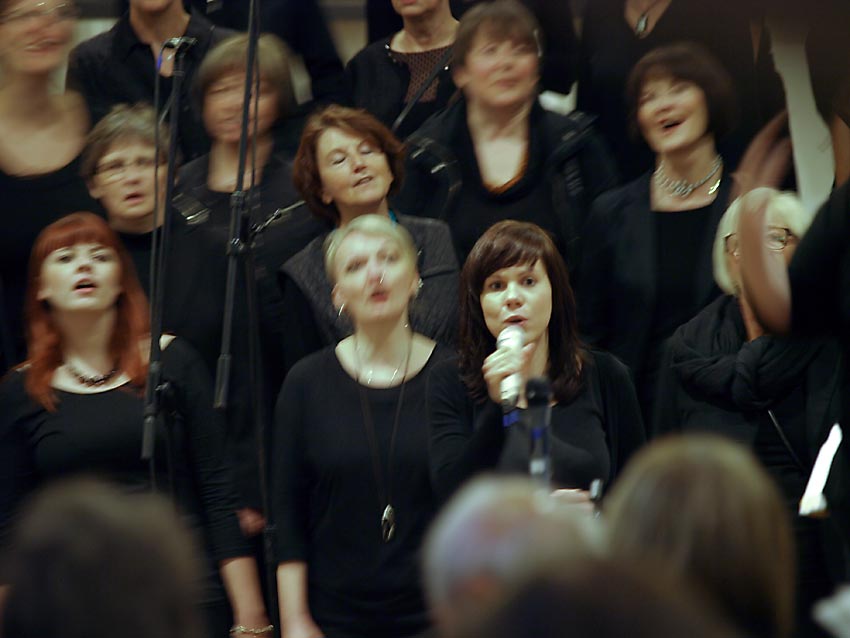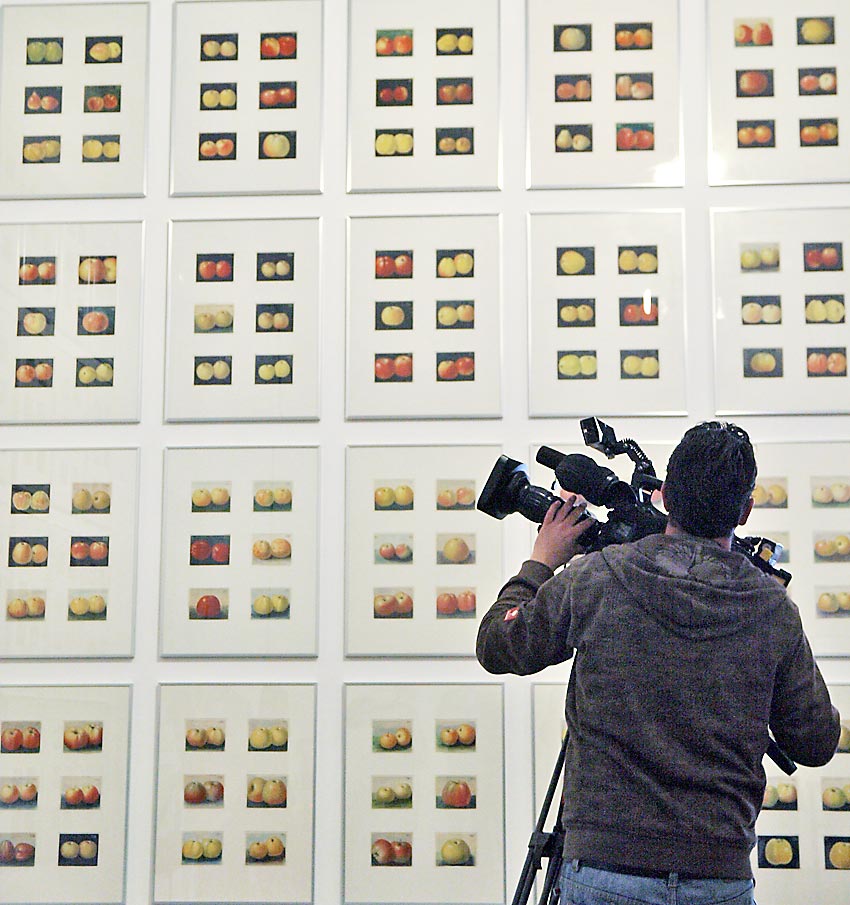Mit einem Essay von W. Q. Judge (April, 1886)
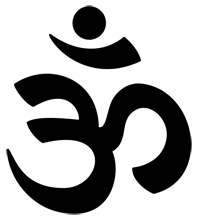 Aum!
Aum!
Die Theorie vom Urknall unseres dreidimensionalen Universums erfreut sich ungebrochen allgemeiner Beliebtheit, obwohl nach neueren Thesen, etwa der String-Theorie, die Wirklichkeit aus mehr als nur drei (oder vier, ordnet man den drei Raumachsen die Zeitachse hinzu) Dimensionen bestehen könnte, und nicht klar ist, ob und wie die Urknall-Theorie sich damit verträgt.
Was die „exakte“ Wissenschaft als Erkenntnisfortschritt feiert, war längst Teil der Weisheitslehren und dort nachzulesen. Statt mittels kühl-technischer Begriffe, wie „Ur-Knall,“ kommen mehrschichtige Symbole zum Einsatz. Prominentestes Symbol: die Silbe OM (AUM). Jedem Yoga-Übenden geläufig, reflektiert die Silbe nicht Geringeres als den phänomenalen Zusammenhang von Entstehung, Erhaltung und Zerstörung des Universums – kurz: OM ist Schöpfungssymbol.
Der irisch-amerikanisch Mystiker und Mitbegründer der modernen theosophischen Bewegung im letzten Viertel des 19. Jahrhunderts, W. Q. Judge, hat mit dem Essay AUM! die verschiedenen Schichten des universellen Symbols auf zeitlose Weise herausgearbeitet.
A U M !
THE most sacred mystic syllable of the Vedas is Aum. It is the first letter of the Sanskrit alphabet, and by some it is thought to be the sound made by a new born child when the breath is first drawn into the lungs. The daily prayers of the Hindu Brahmin are begun and ended with it, and the ancient sacred books say that with that syllable the gods themselves address the most Holy One.
In the Chandogya Upanishad its praises are sung in these words:
Let a man meditate on the syllable OM, called the udgitha, …it is the best of all essences, the highest, deserving the highest place, the eighth.
It is then commanded to meditate on this syllable as the breath, of two kinds, in the body – the vital breath and the mere breath in the mouth or lungs, for by this meditation come knowledge and proper performance of sacrifice. In verse 10 is found:
Now, therefore, it would seem to follow that both he who knows the true meaning of OM, and he who does not, perform the same sacrifice. But this is not so, for knowledge and ignorance are different. The sacrifice which a man performs with knowledge, faith, and the Upanishad is more powerful.
Outwardly the same sacrifice is performed by both, but that performed by him who has knowledge and has meditated on the secret meaning of OM partakes of the qualities inhering in OM, which need just that knowledge and faith as the medium through which they may become visible and active. If a jeweler and a mere ploughman sell a precious stone, the knowledge of the former bears better fruit than the ignorance of the latter.
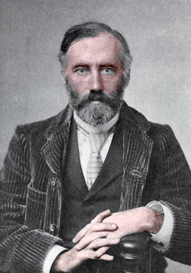 William Q. Judge
William Q. Judge
Foto: Public Domain
Shankaracharya in his Sharir Bhashya dwells largely on OM, and in the Vâyu Purâna a whole chapter is devoted to it. Now as Vâyu is air, we can see in what direction the minds of those who were concerned with that purana were tending. They were analyzing sound, which will lead to discoveries of interest regarding the human spiritual and physical constitution. In sound is tone, and tone is one of the most important and deep reaching of all natural things. By tone, the natural man and the child express the feelings, just as animals in their tones make known their nature. The tone of the voice of the tiger is quite different from that of the dove, as different as their natures are from each other, and if the sights, sounds, and objects in the natural world mean anything, or point the way to any laws underlying these differences, then there is nothing puerile in considering the meaning of tone.
The Padma Purâna says:
The syllable OM is the leader of all prayers; let it therefore be employed in the beginning of all prayers,“ and Manu in his laws ordains: „A Brahmin, at the beginning and end of a lesson on the Vedas, must always pronounce the syllable OM, for unless OM precede, his learning will slip away from him, and unless it follows, nothing will be long retained.
The celebrated Hindoo Raja, Ramohun Roy, in a treatise on this letter says:
OM, when considered as one letter, uttered by the help of one articulation, is the symbol of the supreme Spirit. One letter (OM) is the emblem of the Most High (Manu II, 83). But when considered as a triliteral word consisting of
(a),
(u),
(m), it implies the three Vedas, the three states of human nature, there three divisions of the universe, and the three deities – Brahma, Vishnu, and Siva, agents in the creation, preservation, and destruction of this world; or, properly speaking, the three principal attributes of the Supreme Being personified in those three deities. In this sense it implies, in fact, the universe controlled by the Supreme Spirit.
Now we may consider that there is pervading the whole universe a single homogeneous resonance, sound, or tone which acts, so to speak, as the awakener or vivifying power, stirring all the molecules into action. This is what is represented in all languages by the vowel a, which takes precedence of all others. This is the word, the verbum, the Logos of St. John of the Christians, who says:
In the beginning was the Word, and the word was with God, and the word was God1.
This is creation, for without this resonance or motion among the quiescent particles, there would be no visible universe. That is to say, upon sound, or, as the Aryans called it, Nâda Brâhma (divine resonance), depends the evolution of the visible from the invisible.
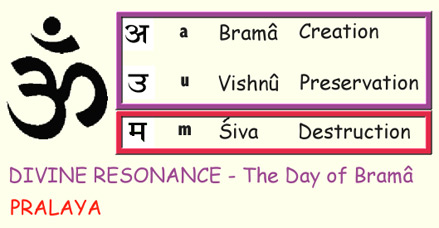 OM – AUM. Symbolischer Ausdruck für Entstehung (Urknall), Erhaltung und Zerstörung des Universums. Grafik: Kô-Sen
OM – AUM. Symbolischer Ausdruck für Entstehung (Urknall), Erhaltung und Zerstörung des Universums. Grafik: Kô-Sen
But this sound a, being produced, at once alters itself into au, so that the second sound u is that one made by the first in continuing its existence. The vowel u, which in itself is a compound one, therefore represents preservation. And the idea of preservation is contained also in creation, or evolution, for there could not be anything to preserve, unless it had first come into existence.
If these two sounds, so compounded into one, were to proceed indefinitely, there would be of course no destruction of them. But it is not possible to continue the utterance further than the breath, and whether the lips are compressed or the tongue pressed against the roof of the mouth, or the organs behind that used, there will be in the finishing of the utterance the closure or m sound, which among the Aryans had the meaning of stoppage. In this last letter there is found the destruction of the whole word or letter. To reproduce it a slight experiment will show that by no possibility can it be begun with m, but that au invariably commences even the utterance of m itself. Without fear of successful contradiction, it can be asserted that all speech begins with au, and the ending, or destruction of speech, is in m.
Divine resonance – at last is heard as the music of the spheres
The word „tone“ is derived from the Latin and Greek words meaning sound and tone. In the Greek the word „tonos“ means a „stretching“ or „straining.“ As to the character of the sound, the word „tone“ is used to express all varieties, such as high, low, grave, acute, sweet, and harsh sounds. In music it gives the peculiar quality of the sound produced, and also distinguishes one instrument from another; as rich tone, reedy tone, and so on. In medicine, it designates the state of the body, but is there used more in the signification of strength, and refers to strength or tension. It is not difficult to connect the use of the word in medicine with the divine resonance of which we spoke, because we may consider tension to be the vibration, or quantity of vibration, by which sound is apprehended by the ear; and if the whole system gradually goes down so that its tone is lowered without stoppage, the result will at last be dissolution for that collection of molecules. In painting, the tone also shows the general drift of the picture, just as it indicates the same thing in morals and manners. We say, „a low tone of morals, an elevated tone of sentiment, a courtly tone of manners,“ so that tone has a signification which is applied universally to either good or bad, high or low. And the only letter which we can use to express it, or symbolize it, is the a sound, in its various changes, long, short, and medium. And just as the tone of manners, of morals, of painting, of music, means the real character of each, in the same way the tones of the various creatures, including man himself, mean or express the real character; and all together joined in the deep murmur of nature go to swell the Nâda Brâhma, or Divine resonance, which at last is heard as the music of the spheres.
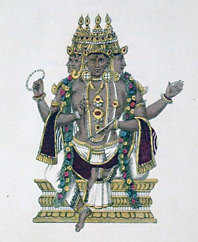 Bramâ, Darstellung aus dem
Bramâ, Darstellung aus dem
19. Jahrhundert. Foto: gemeinfrei
Meditation on tone, as expressed in this Sanskrit word OM, will lead us to a knowledge of the secret Doctrine. We find expressed in the merely mortal music the seven divisions of the divine essence, for as the microcosm is the little copy of the macrocosm, even the halting measures of man contain the little copy of the whole, in the seven tones of the octave. From what we are led to the seven colors, and so forward and upward to the Divine radiance which is the Aum. For the Divine Resonance, spoken of above, is not the Divine Light itself. The Resonance is only the outbreathing of the first sound of the entire Aum. This goes on during what the Hindoos call a Day of Brahmâ, which, according to them, last a thousand ages2. It manifests itself not only as the power which stirs up and animates the particles of Universe, but also in the evolution and dissolution of man, of the animal and mineral kingdoms, and of solar systems. Among the Aryans it was represented in the planetary system by Mercury, who has always been said to govern the intellectual faculties and to be the universal stimulator. Some old writers have said that it is shown through Mercury, amongst mankind, by the universal talking of women.
And wherever this Divine Resonance is closed or stopped by death or other change, the Aum has been uttered there. These utterances of Aum are only the numerous microcosmic enunciations of the Word, which is uttered or completely ended, to use the Hermetic or mystical style of language, only when the great Brahm stops the outbreathing, closes the vocalization, by the m sound, and thus causes the universal dissolution. This universal dissolution is known in the Sanskrit and in the secret Doctrine as the Mahâ Pralaya, Mahâ being „the great,“ and Pralaya „dissolution.“ And so, after thus arguing, the ancient Rishees of India said:
Nothing is begun or ended; everything is changed, and that which we call death is only a transformation.
 Statue von Shiva in Bangalore.
Statue von Shiva in Bangalore.
Foto: Deepak Gupta
In thus speaking they wished to be understood as referring to the manifested universe, the so-called death of a sentient creature being only a transformation of energy, or a change of the mode and place of manifestation of the Divine Resonance. Thus early in the history of the race the doctrine of conservation of energy was known and applied. The Divine Resonance, or the au sound, is the universal energy, which is conserved during each Day of Brahmâ, and at the coming on of the great Night is absorbed again into the whole. Continually appearing and disappearing it transforms itself again and again, covered from time to time by a veil of matter called its visible manifestation, and never lost, but always changing itself from one form to another. And herein can be seen the use and beauty of the Sanskrit. Nâda Brahmâ is Divine Resonance; that is, after saying Nâda, if we stopped with Brahm, logically we must infer that the m sound at the end of Brahm signified the Pralaya, thus confuting the position that the Divine Resonance existed, for if it had stopped it could not be resounding. So they added an a at the end of the Brahm, making it possible to understand that as Brahmâ the sound was still manifesting itself. But time would not suffice to go into this subject as it deserves, and these remarks are only intended as a feeble attempt to point out the real meaning and purpose of Aum.
For the above reasons, and out of the great respect we entertain for the wisdom of the Âryans, was the symbol adopted and placed upon the cover of this magazine and at the head of the text.
With us OM has signification. It represents the constant undercurrent of meditation, which ought to be carried on by every man, even while engaged in the necessary duties of this life. There is for every conditioned being a target at which the aim is constantly directed. Even the very animal kingdom we do not except, for it, below us, awaits its evolution into a higher state; it unconsciously perhaps, but nevertheless actually, aims at the same target.
Having taken the bow, the great weapon, let him place on it the arrow, sharpened by devotion. Then, having drawn it with a thought directed to that which is, hit the mark, O friend, – the Indestructible. OM is the bow, the Self is the arrow, Brahman is called its aim. It is to be hit by a man who is not thoughtless; and then as the arrow becomes one with the target, he will become one with Brahman. Know him alone as the Self, and leave off other words. He is the bridge of the Immortal. Meditate on the Self as OM. Hail to you that you may cross beyond the sea of darkness3.
A U M !
(Kô-Sen)
Zuletzt aktualisiert: 29.07.2009 von Heinz Knotek





